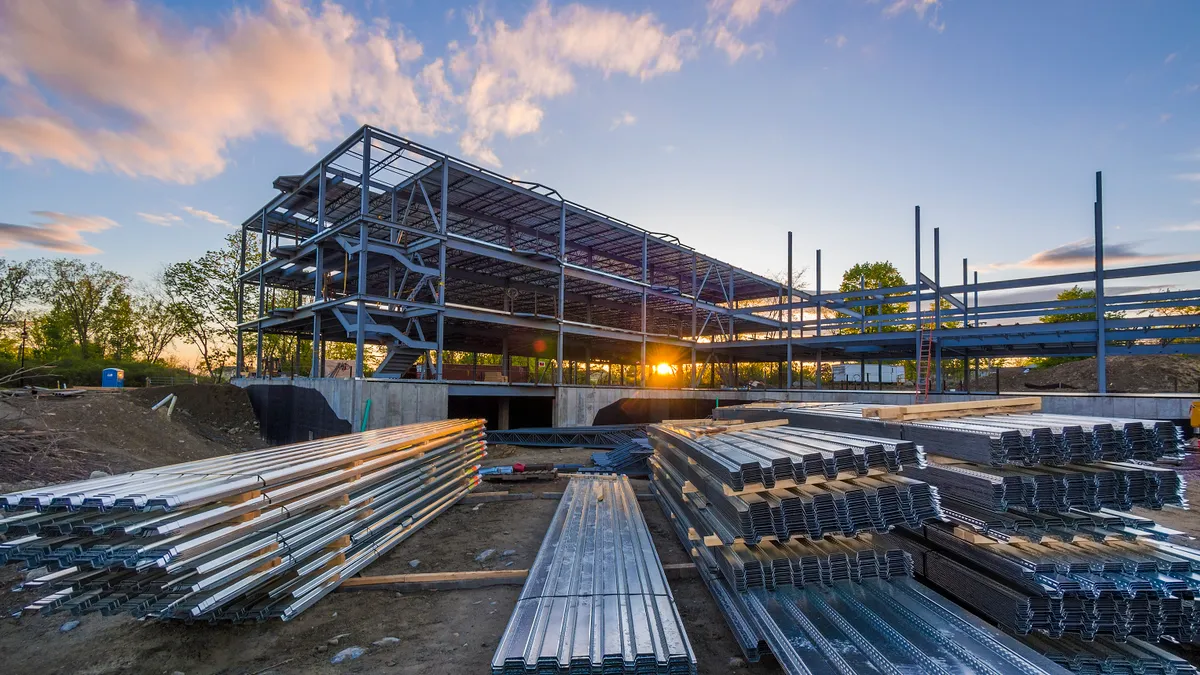Dive Brief:
- San Francisco-based startup Built Robotics is testing an autonomous track loader that can excavate holes for building foundations at the same rate as its human counterparts — and up to 24 hours per day, Wired reported.
- The unmanned Bobcat tractor is outfitted with a cargo carrier filled with electronics and uses lidar to navigate the job site around it. That lidar is designed to work specifically on a construction excavation site, allowing the robot to work in the high-vibration environment while also enabling it to measure the material it has loaded.
- Operators need only set coordinates and input the size of the hole they want before the robot carries out those instructions. The tech, still being perfected, has already been executed on small pilot programs across the Bay Area.
Dive Insight:
As more manufacturing jobs become automated, many in the construction trades have worries their jobs, too, could go by the wayside. Technological advances such as the Hadrian X, a bricklaying robot manufactured by Australian company Fastbrick Robotics, is one such development stoking those fears. The truck-mounted arm, which can lay up to 1,000 bricks per hour, likely helped the company snag a $2 million investment from Caterpillar earlier this year, with the potential to invest another $8 million. The technology is expected to go into full production in 2019.
Caterpillar, too, has showcased its interest in automated technology outside of its investments. The company showcased its self-driving, 300-ton mining trucks last month to give a preliminary look at how autonomous vehicles and their human-operated companions can work together on the job site. Caterpillar already has two such trucks at work on customer sites and has set its sights on having more than 100 such vehicles on three continents and in three mining functions by year's end.
For robotics to gain a foothold in construction, the industry will need to continue equipping such machines with the technology that will allow them to collect and grant machine intelligence, EquipmentShare president Willy Schlacks told Construction Dive earlier this year. That data enables machines to transmit information, such as whether the equipment is in need of maintenance or its job site location. Those telematics systems, in turn, could enable collaboration between automated vehicles and human-operated equipment, allowing job site workflow data to be shared among project stakeholders and the machines carrying out the work.
Whether bots will enhance, disrupt or completely replace construction jobs is still unclear. And while robotics are still in their infancy on the job site, new innovations such as Built Robotics' and Caterpillars' stand to highlight the technology's potential to improve productivity in an industry criticized for its stagnant productivity gains.












